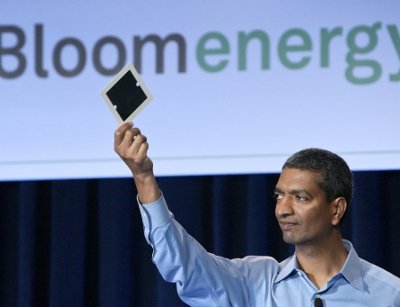AT&T has signed on for more Bloom Energy fuel-cell power for its facilities around California and Connecticut, becoming Bloom’s largest non-utility customer.
The telco and IT services company uses Bloom’s solution to power a variety of facilities, including data centers. This is its second deal with the energy company, coming more than one year after it bought 7.5MW of fuel-cell capacity for 11 facilities in California.
Bloom’s value proposition is cheaper and more reliable energy than the utility grid can provide. The abundance of shale gas has brought natural-gas rates down substantially, and having an off-the-grid generation plant onsite gives the customer the ability to take advantage of these low rates and independence from unreliable grid infrastructure.
There are further benefits for data centers specifically, Peter Gross, who leads Bloom’s Mission Critical Systems practice, told us in June. A 100% fuel-cell powered data center does not need to spend on traditional support infrastructure, such as uninterruptible power supply (UPS, batteries, generators) and on maintaining that infrastructure.
The data center building itself does not need to be as big because that support infrastructure is not there. “All of these contribute to a total cost of ownership that over a certain period of time is lower than the traditional architecture,” Gross said.
After its latest deal with Bloom, AT&T will have a total of 17.1MW of Bloom generation capacity deployed at 28 of its sites. The company expects these fuel cells to produce more than 149m kWh of electricity annually.
Because the solution is such a radical departure from the norm, take-up of Bloom fuel-cell plants has been slow by the data center industry. But the company has been successful in convincing some high-profile customers, including Apple and eBay, to go with its approach.

